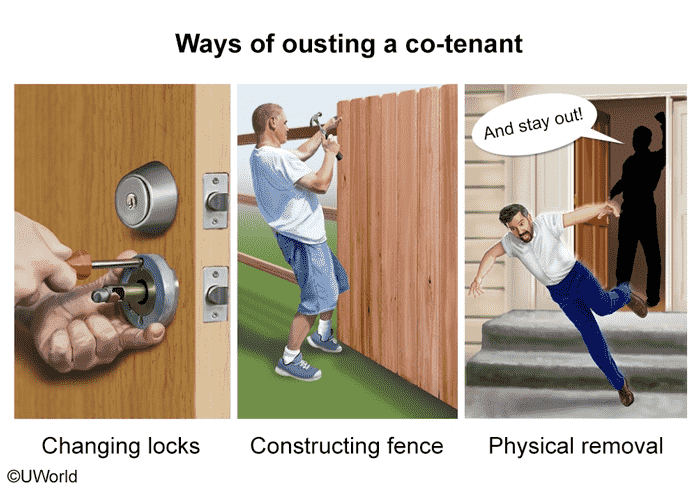Having roommate problems, are you? And right in the middle of studying for the bar exam! This might be a good time to get up to speed on ouster—a cotenant’s wrongful refusal to allow another cotenant access to all or some of the property. All joking aside, ouster is a tenancy problem that commonly appears on the bar exam. So let’s dig in!
Remember adverse possession from 1L year? It allows you to acquire ownership of another’s property if, for the statutory period, your possession of the land is:
- Open and notorious – apparent or visible to a reasonable owner
- Continuous – uninterrupted for the statutory period
- Exclusive – not shared with the owner
- Actual – physical presence on the property
- Nonpermissive – hostile and adverse to the owner
Since cotenants have an equal right to possess and use the entire property at all times, the above elements can be difficult for a cotenant to meet. As a result, a cotenant can acquire sole ownership of the co-owned property through adverse possession only if the cotenant also commits ouster. This occurs when one cotenant prevents another cotenant from using or accessing the property or otherwise acts in such an adverse and hostile manner that the other cotenant is denied his/her right in the property. The following image shows some common ways to commit ouster:

The MBE may try to trick you by supplying facts that the other cotenant has worked abroad for a year or that one cotenant lives alone on the property while the other cotenant lives far away. Keep in mind that merely enjoying sole possession or use of the property does not constitute ouster! The ousting cotenant must actually take steps to prevent the other cotenant from using or accessing the property, and that cotenant must have actual or constructive notice of those steps.
See if you can spot this trick when answering real property questions in the UWorld MBE® QBank. Click here to access our QBank or purchase a subscription.




